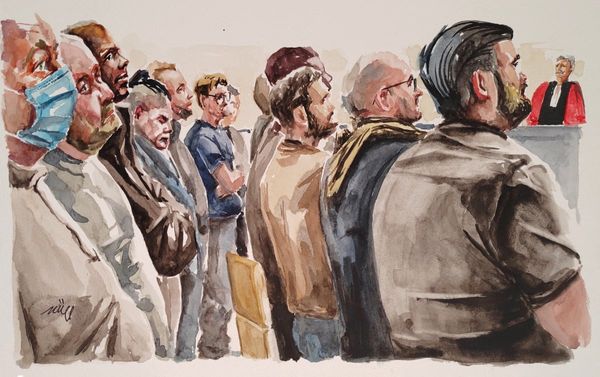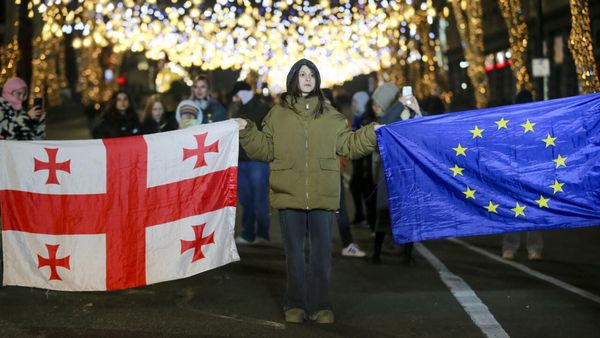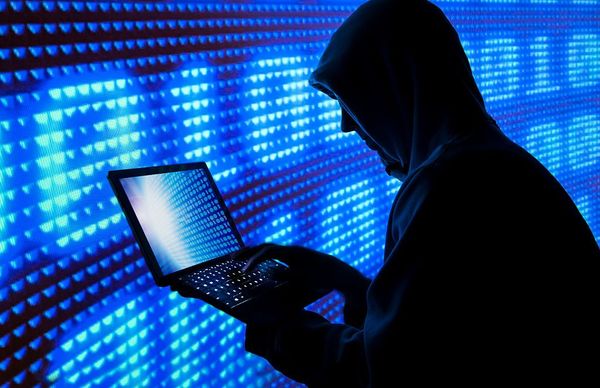
Peru’s longest period of democracy yet is in danger of coming to a painful close. Over the past few years, politicians have engaged in near-constant takedowns of opponents—including impeachments and judicial targeting—and obstruction of governance. This has contributed to the public perception that democracy is not working, either because it does not produce concrete results or because all politicians are corrupt. Unsurprisingly, a large percentage of voters in general elections this year chose populist, anti-system candidates from all sides of the spectrum. In the end, the two candidates who made it to the presidential runoff barely got 33 percent of the vote during the first round. As in previous elections, a significant group of Peruvians simply chose to leave their ballots blank; yet this time, blank votes were the second “most voted” option.
On July 28, a new president will take office. Pedro Castillo—a leftist candidate who proposed to “deactivate” important democratic institutions, such as the Constitutional Court and the Ombudsman’s Office—defeated right-wing Keiko Fujimori, a candidate beset by numerous corruption scandals who is the daughter of former Peruvian dictator Alberto Fujimori, by less than 1 percent of the votes in early June’s runoff election. Although both are populist and socially conservative, they have entirely different views on the economy and the role of the state.
An important portion of the electorate feared this outcome, concerned Castillo might concentrate power and go down an authoritarian path—he has made statements indicating openness to shuttering the legislature should it oppose his suggested economic and political reforms. He also has shown the necessary charisma and will to go against democratic institutions. But recent history points toward ungovernability rather than authoritarianism. Peru’s Congress remains fragmented, and Castillo’s party does not hold a majority. Castillo’s own priorities have become somewhat unclear as he moderated his previous statements and altered the party’s platform between the first and second rounds of the election.
Either way, the next few years may see further democratic erosion—and will almost certainly see an elite backlash against Castillo—while policies to improve Peruvians’ standards of living fall by the wayside. This is not a new problem. Since 2016, Peru has faced similar governability crises. The ongoing clash between the executive and legislative powers has created four presidents in a period of just five years. In part, this is because of the elites’ irresponsible behavior—who recklessly prioritize their own political and personal agendas and use all constitutional and judicial mechanisms available to them to pursue their political enemies, eroding public trust in institutions. In five years, Peru has experienced the resignation of a president, a closure of congress, a call for early elections, a presidential impeachment (accompanied by multiple impeachment attempts), and the preventive imprisonment of the country’s main political leaders.
Such extreme decisions have pushed Peru’s fragile institutions to a breaking point. Peru not only has one of the highest per capita COVID-19 death tolls in the world but has also experienced a corresponding economic downturn. Although citizens were concerned with managing their economic situations and addressing the pandemic, the political elite was focused on attacking one another. Congress’s decision to remove former Peruvian President Martín Vizcarra at the end of 2020, accusing him of corruption in charges that many considered politically motivated, was the straw that broke the camel’s back, fueling massive protests across the country.
Five years ago, then-right-wing Peruvian President Pedro Pablo Kuczynski defeated Keiko Fujimori by a small margin. In retaliation, the Fujimorista majority in Congress boycotted the government’s initiatives and aimed to censor its ministers. Ultimately, they promoted Kuczynski’s removal based on his alleged links to the Lava Jato (Operation Car Wash) corruption scandal, an investigation that ultimately revealed bribery and money laundering across the region. As a result, the president forcibly resigned in 2018 after videos alleging a vote-buying negotiation to avoid the first impeachment attempt were made public. Then-vice president Vizcarra thereby replaced him. The scandal gave the perfect excuse for the opposition to continue attacking the government. Months later, Keiko Fujimori herself was detained for several months, allegedly linked to the Car Wash scandal.
As Peru began to experience the effects of the Lava Jato investigations—which have taken down politicians across the region—party leaders, congressmen, and any politician with a chance of running for office quickly pointed blame at one another. Most political leaders supported the indiscriminate use of pretrial imprisonment against rivals to achieve political advantage (and electoral gains). In this context, Vizcarra secured popular support by using an anti-corruption and reformist agenda he claimed was impossible to advance given the presence of a disloyal opposition: Fujimorismo. He was likely right, but his decision to use an institutional arrangement to close Congress in 2019 and call for early legislative elections, which took place in early 2020, did not help bridge the political crisis or improve public perception in the long term. Although the measure was initially popular, the result was more tension between the executive and legislative powers once the new Congress was installed, which led to further political alienation among Peruvians.
That alienation is rooted in recent history. Since Peru’s return to democracy in 2000, after the fall of Alberto Fujimori’s regime, the economic elite has been imprudently reluctant to allow gradual economic and social reforms, defending extreme austerity policies at the cost of popular demands for change. Between 2001 and 2016, Peru was successful in reducing poverty but failed to expand social programs to reach much of the population, leaving them vulnerable to any sudden change of the economic tide.
Last year, the pandemic drastically exposed these limitations as 3 million Peruvians slipped back into poverty. The economic model keeps failing them. In the second round of the 2021 elections, the southern and central parts of the country’s Andes regions, with high levels of poverty, massively supported Castillo’s radical change proposal. This was unsurprising: Peru has a socioeconomic divide along territorial lines that has never been fully addressed by any group in power, leaving many voters in rural regions unheard for decades.
Although political elites sacrificed institutional stability and policy reform for petty feuds, the upper class, and particularly the most important business organizations, were satisfied with how the economic model worked for them. They chose to ignore a trend shown by electoral results since 2006: Large parts of the population felt left behind by this very model and the state that preserved it. By the 2021 elections, most Peruvians felt neither the economy nor the democratic model produced concrete results. Despite lackluster electoral support, of the two candidates, Castillo, a public school teacher born in the Andes, best represented that sentiment.
This follows a polarized election campaign, during which, instead of promoting moderation and building bridges, a large part of the economic and cultural elite, including major media outlets, quickly united in a campaign “against the communist threat” as Castillo’s popular support increased in the second round. This campaign did not hesitate to manipulate citizens’ fear of a possible return to the period of political violence caused by the Marxist guerrilla group the Shining Path from 1980 to 2000. The rhetoric relied on “terruqueo”—the act of calling any left-wing option “terrorism”—coupling it with openly racist and classist speeches against Castillo and his voters. The most radical groups even called for military coups or the storming of the Government Palace in case Castillo was elected. Those discourses are becoming dangerously normalized.
Beyond a continuation of the 2016 to 2021 presidential turnover, there are reasons to fear the intensification of such a scenario. Castillo is a better political leader than Kuczynski, and Vizcarra left a bad precedent by dissolving the Congress through a broad interpretation of the law. If Castillo were to use it, this would likely lead to more instability and continued confrontation between government powers. Adding fuel to the fire, Lava Jato and other corruption investigations on important politicians, such as Fujimori and Vizcarra, are still open, and the judiciary also has the capacity to play a politicized role. In recent years, the prosecution has also been questioned for opening investigation processes without sufficient evidence. Additionally, Peru’s Congress has used the existence of preliminary investigations to motivate impeachments, as took place with Kuczynski and Vizcarra.
Yet, Castillo will also face a tougher opposition given his left-wing politics and the recent radicalization of Keiko Fujimori’s obstructionist strategy. The defeated candidate is challenging the electoral results, even though no evidence suggests fraud. Using misinformation and legal challenges, Keiko Fujimori and her allies seek to delegitimize the elections and, with it, the new government. This fraud narrative has taken hold in important segments of the right, bolstered by how close the election’s results were, which led to having to wait for every vote to come in before calling it, and may persist for years to come. Mainstream media outlets have failed to question these empty fraud claims, rather choosing to provide space for baseless accusations.
It is likely Peru’s Congress will once again try to remove the president. The arbitrary interpretation of “moral incapacity” as a cause for removing Vizcarra in 2020 sets a precedent that any vague cause can be utilized, and accusations of fraud might play into this. Although Keiko Fujimori’s party no longer holds a majority, the congressional distribution favors right-wing coalitions, some of which have already joined in amplifying the “fraud” narrative. Additionally, if major media outlets continue in their uncritical support for Fujimorismo and company, they may thwart any reform effort by Castillo, no matter how modest.
Under constant scrutiny, without strong and loyal political and social coalitions behind him, and with a small electoral base, Castillo will likely face a constant campaign to topple his presidency. Going forward, the prospects for democratic continuity—and improving public perception of government institutions—not only rest on the new president’s adherence to the rules but also on the opposition’s commitment to stability.
But instead of focusing on what a Castillo presidency would look like and preparing to hold him accountable for his actions, political elites seem likely to keep imposing an “us versus them” narrative. This could lead to an unstable government that falls within the first year, continuing a pattern that fails to achieve needed policy reforms or a government that surreptitiously concentrates power while everyone is too busy trying to fight off undemocratic forces on the right. Regardless of the path, democracy in Peru is at a breaking point.







